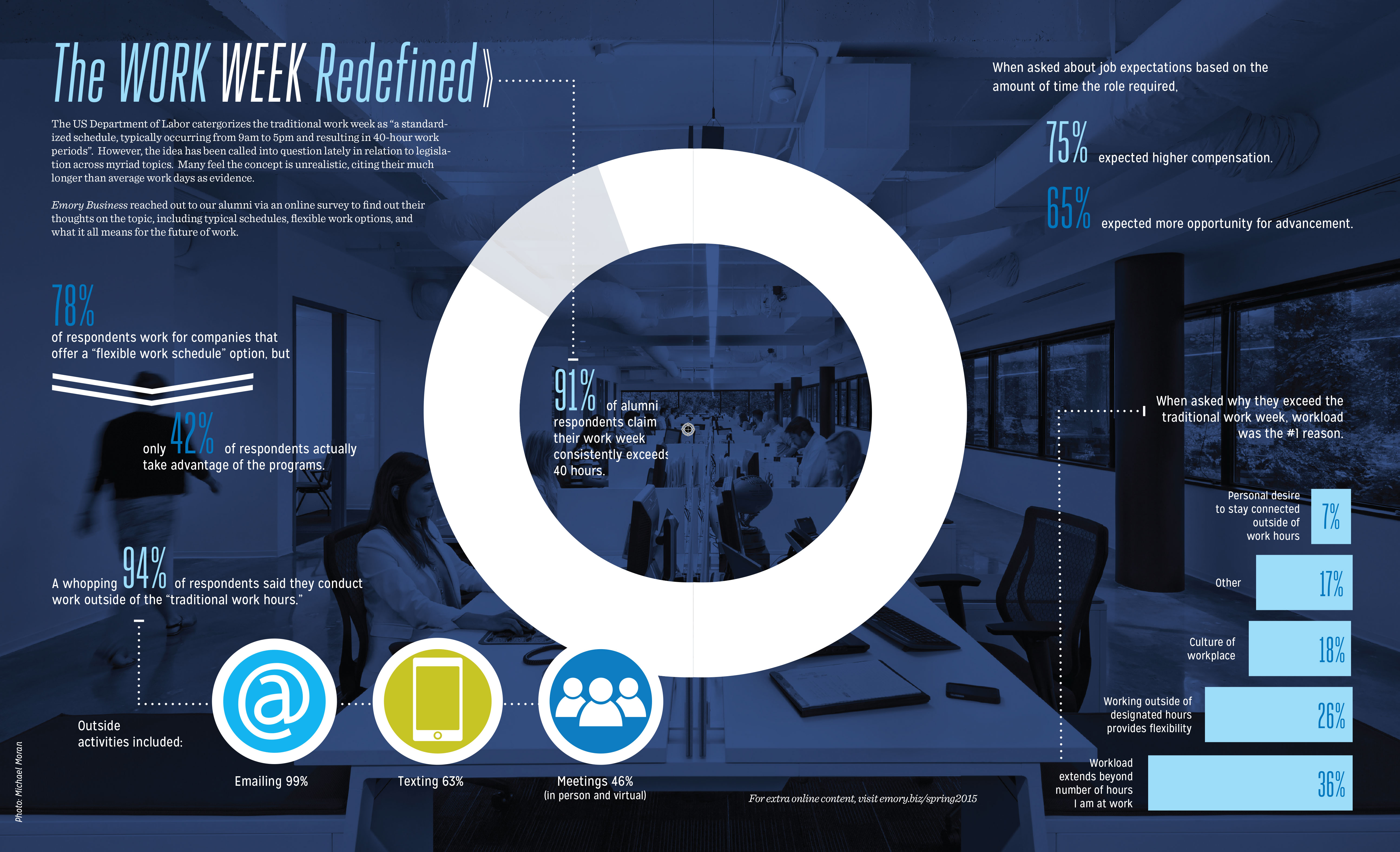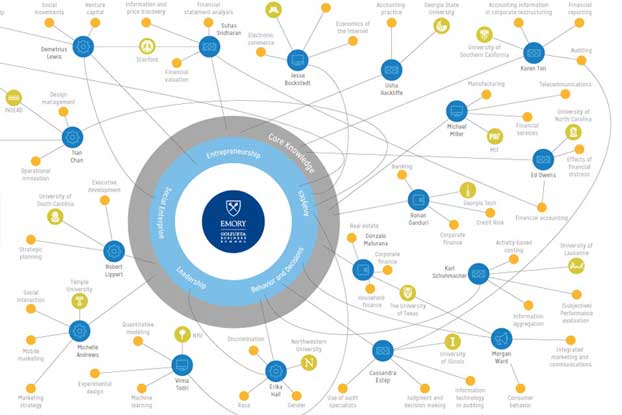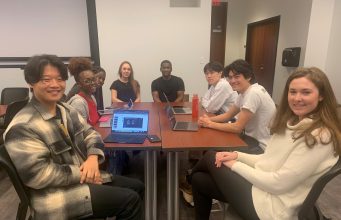Click here for larger graphic.
Exploring the Future of Work for the spring issue of Emory Business magazine would not be complete without taking a look at what accounts for the workweek. The US Department of Labor categorizes the traditional workweek as “a standardized schedule, typically occurring from 9 a.m. to 5 p.m. and resulting in 40-hour work periods.” But according to Goizueta alumni, their work time far exceeds forty hours, and they don’t foresee a change in the future.
Flex work options are nice, but who has time?
More than 250 Goizueta alumni shared their workday experiences in a detailed survey. Ninety-one percent of respondents reported working more than forty hours a week. Interestingly, 81 percent of those with household earnings above $300,000 work more than forty hours, while 95 percent of those earning under $100,000 per household worked more than forty hours.
Additionally, companies are aware of the longer days, and many offer flexible schedules. In fact, industries often seen as most demanding are likely to offer flexible schedules: 87 percent of respondents working in consulting and 76 percent at financial firms said their companies offer flex options. Yet just 42 percent of respondents at firms with flexible work options actually take advantage of the programs. Women participate at a higher rate than men, with 49 percent of eligible women participating versus 36 percent of eligible men.
Blurred lines between work and life
When asked to describe how the workweek will evolve in their particular industry over the next ten years, alumni all agreed that personal and professional boundaries will continue to merge. There is debate about how this will shake out. Respondents offered the following thoughts:
“I expect more work to be conducted virtually and away from a home office. As fewer and fewer employees are able to use their PTO, one might expect companies to simply take it away or measure it less.”
“The workweek will continue to extend into what was traditionally the weekend or personal time. As a result of this shift, however, there will be more flexibility for extended vacation from work with an opportunity to truly unplug.”
“Global business will continue to drive the workweek beyond traditional norms. Today’s digital world and instantaneous communication allow global markets to be constantly engaged in business.”
“Work is fluid. In the future, we will have more open and flexible workplaces where employees can spend more time working, but at their own schedule and with more on-site perks. Employees will work more from iPhones and iPads with webcams and telepresence.”
“In-person meetings, which typically happen at least quarterly, will likely continue and require travel out of normal working hours—unless this evolves to more videoconferencing/Skyping, though I don’t see that happening.”
“More workers will work remotely and stay engaged with teammates through webconferencing and alternate meeting technologies. Sitting around a conference table will become a thing of the past.”
“In ten years, businesses will become more like hub/spoke models. Where nationally/internationally, there are centers where workers can congregate to gain social interaction and achieve the required face-to-face interaction. These places may not be offices, but rather restaurants, hotel lobbies, shared work spaces, etc.”
“In my experience, employers are becoming less flexible and prefer to know when they can expect their employees to be available. Though the standard 8 to 5 is likely a thing of the past, given all the uncertainty/complexity created by these changes, companies are doing more to better define what is considered ‘work time.’ It has been similar for the past fifty years, and I would expect it to be similar for the next ten. [Employees will] work a lot, but compensation will increase to compensate for extended work hours.”
“Employers are slowly becoming more comfortable with flexible work environments, but I believe the majority still require their employees’ physical presence at the office. Younger employees particularly are expected to work from the office; however, senior workers who are proven producers are given more flexibility to work from outside the physical confines of the office.”












